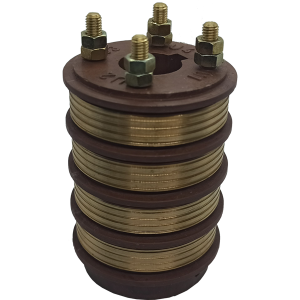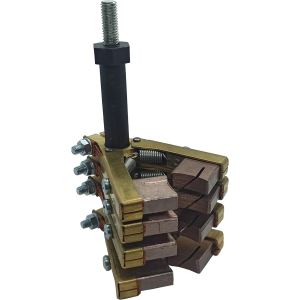What is a Slip Ring? How Does It Work?
Slip rings are electromechanical devices that transfers electrical power and signal from a rotating to a stationary parts of a system.
Slip Ring Working Principles
To be able to transfer power and signals there must be a continuous contact between the conductors of stationary and rotating part of the system during the movement. In order to provide such a contact we can use slip rings.


A typical slipring basically composed of three main parts: ring block (discreet rings), brush block and protective housing. The brush block rides on a ring block to ensure the electrical contact during te movement. Thanks to mentioned electrical contact, slipring mechanism transfers signal and data from one part to another. By doing so a slipring improves the application performance, eliminates the risk of wiring damage and simplifies the process.
Types of Slip Rings
Slip ring contacts can be produced with different technologies regarding the related application. There are four main types of slip ring contacts: carbon brush, liquid metal, fiber optic and fiber brush slip rings.
Slip rings come in several different size and shapes such as capsule, brushles, through bore, pancake, miniature and hybrid sliprings.
There are also types of sliprings which you can be used for transfer of data and fluids in addition to electrical transfer.To decide what type of slip ring you can use for your application, we need to know various details about it.
We can make custom design slip rings in order to meet exact electrical requirements of our clients applications.
Fields of Usage
Slip rings has a wide area of applications such as defense industry, package machines, cable wheels, turn tables, wind turbines, textile machines,robotic arms and any othe rotating devices or machines connecting signal or power.
For more information, click here.

